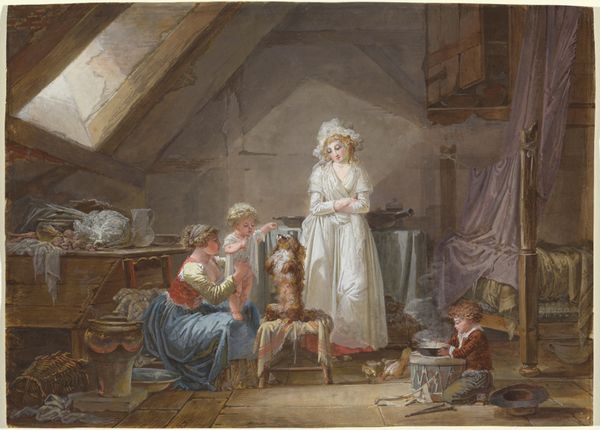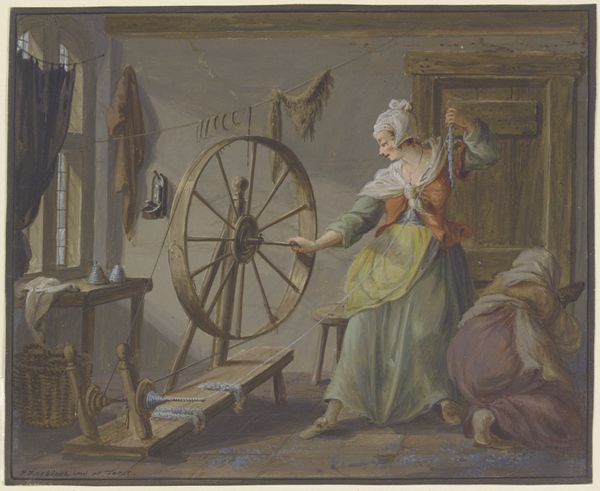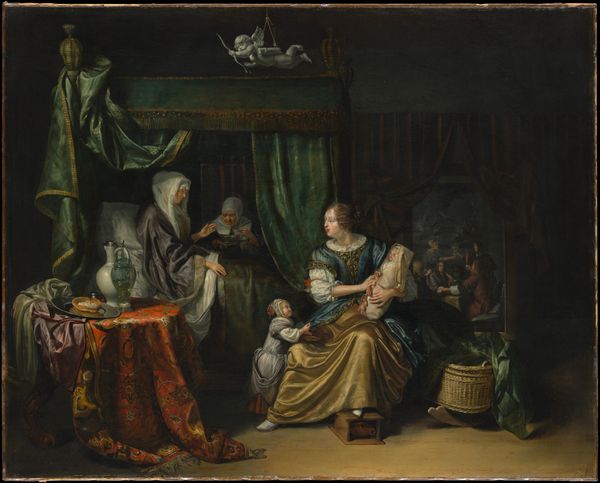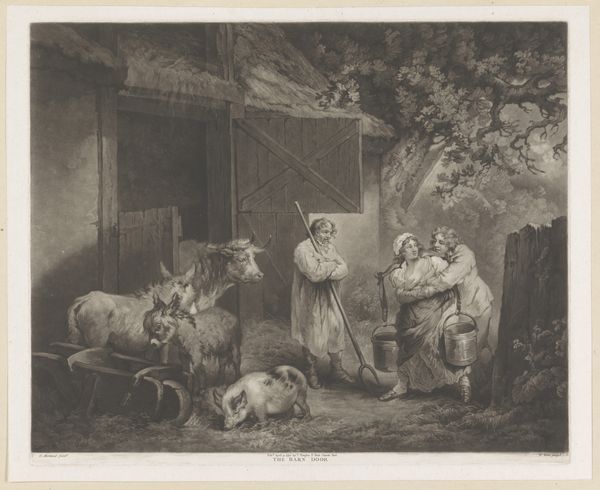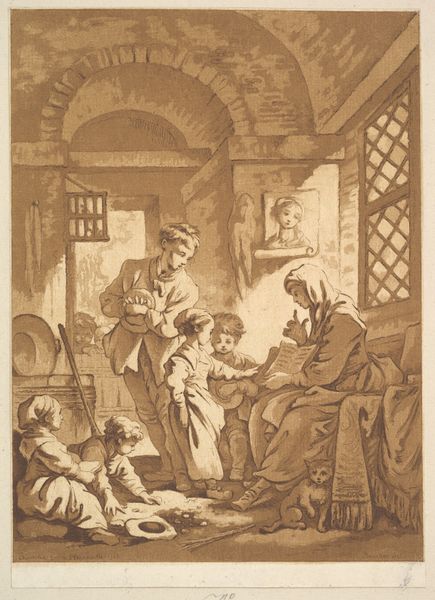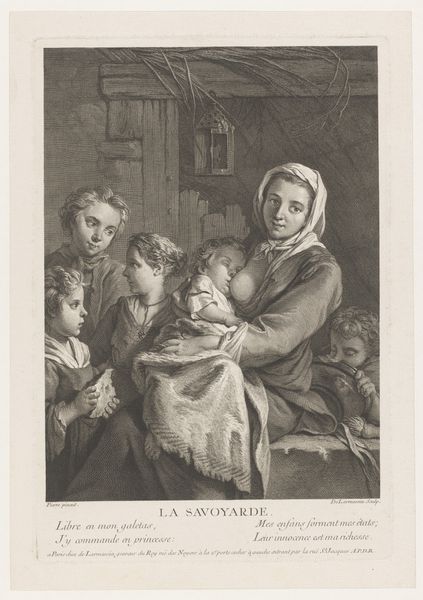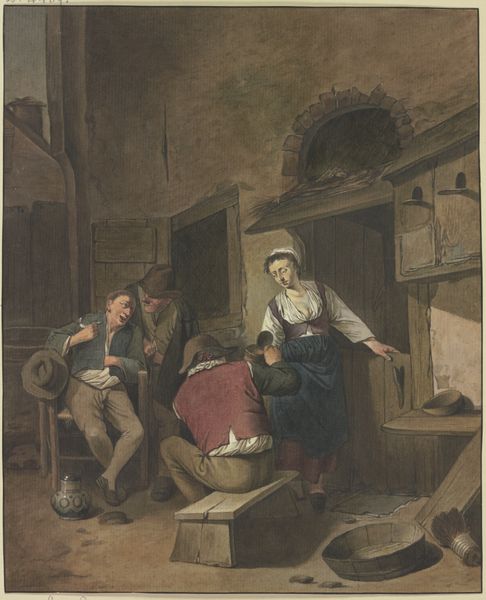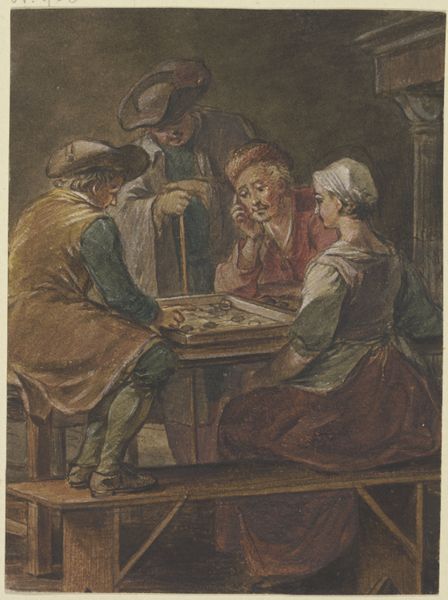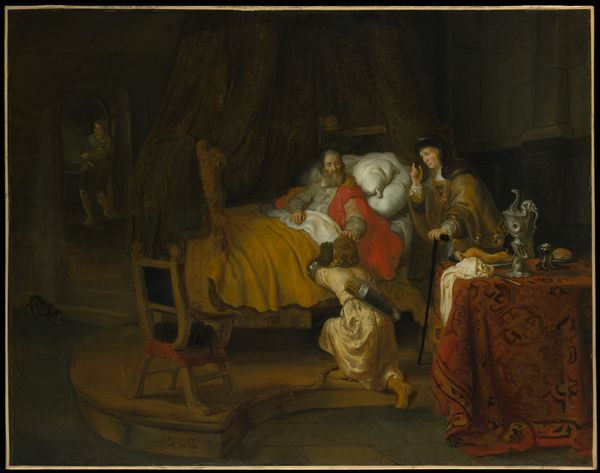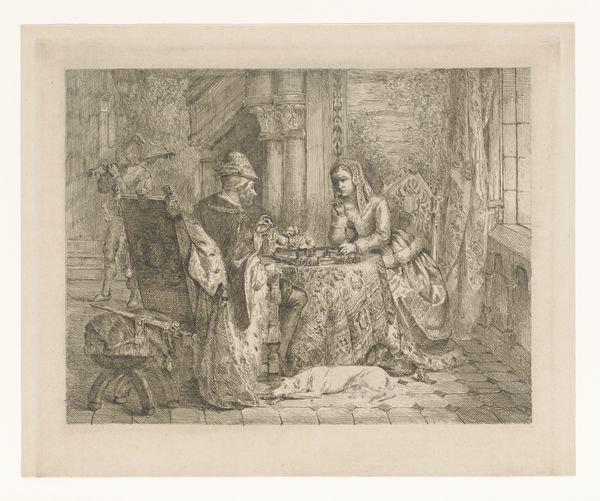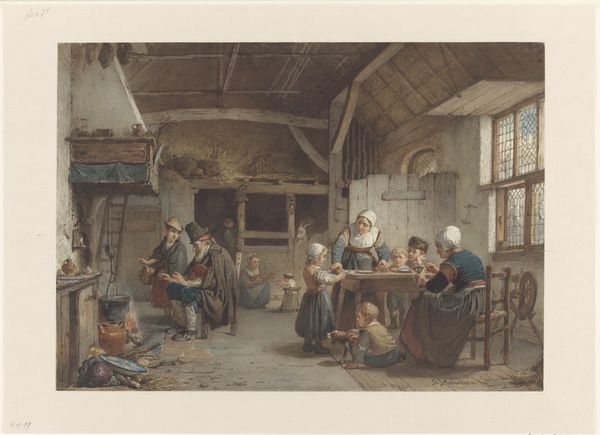
Eine alte Frau haspelt Garn, dabei ein Kind mit einem Vogel
0:00
0:00
drawing, paper, watercolor
#
portrait
#
drawing
#
netherlandish
#
toned paper
#
baroque
#
paper
#
watercolor
#
15_18th-century
#
watercolour illustration
#
genre-painting
#
portrait art
Copyright: Public Domain
Pieter Barbiers’s drawing shows an old woman reeling yarn, with a child and bird, likely dating from the late 18th or early 19th century, rendered in muted watercolor on paper. Notice how the scene depicts a domestic interior organized around labor. The spinning wheel is prominent, as are the tools for winding and preparing thread. These aren’t just props; they are central to the lives of the figures depicted. The artist directs our attention to the means of textile production, highlighting the essential role of women and children in the household economy. Barbiers was attentive to the textures and tones of everyday life, the brick of the walls, the worn wood of the furniture, and the soft, homespun garments. His choice of watercolor lends itself to these softer, more tactile qualities. In this way, he elevates the status of these humble materials, inviting us to consider the social and economic realities they represent. This is not just a sentimental scene of domesticity, but a glimpse into the material conditions of life for many at the time.
Comments
No comments
Be the first to comment and join the conversation on the ultimate creative platform.

